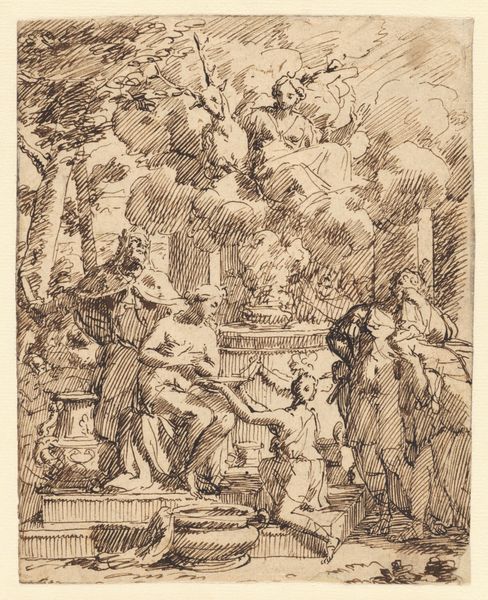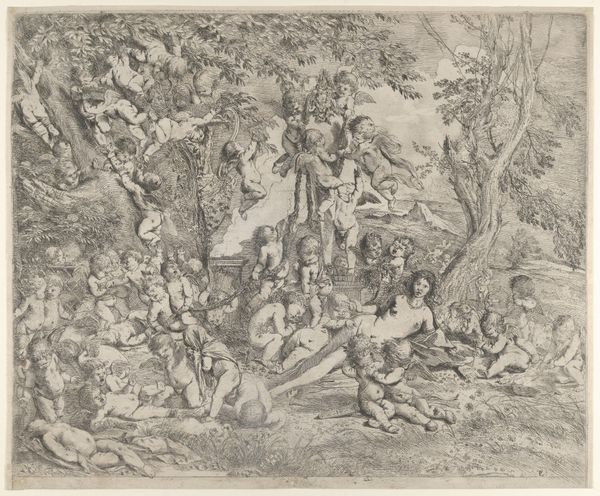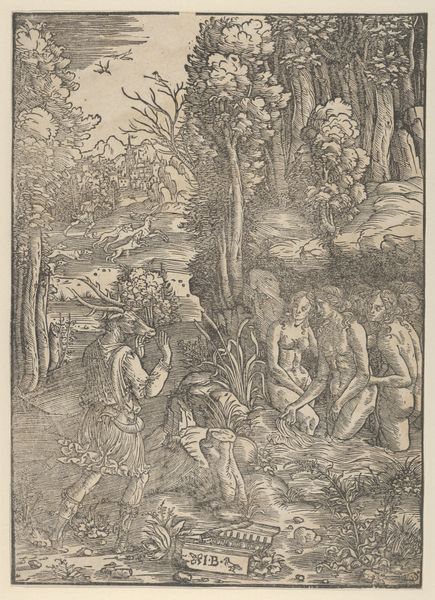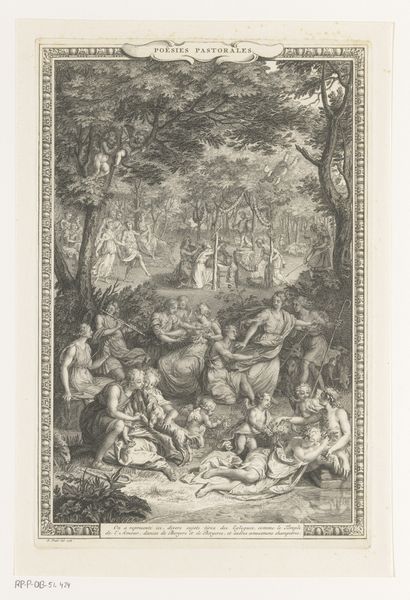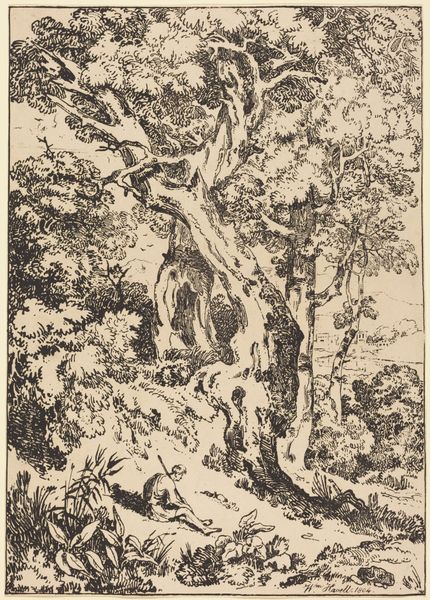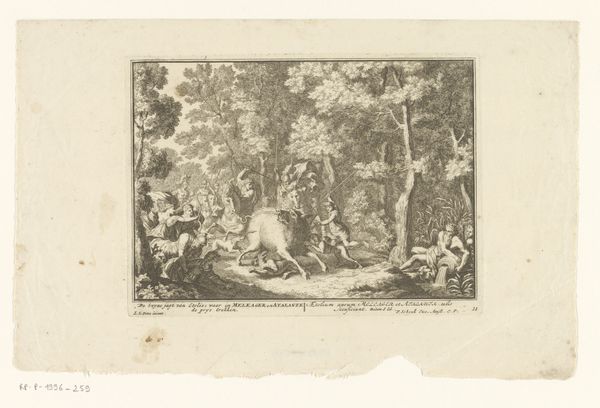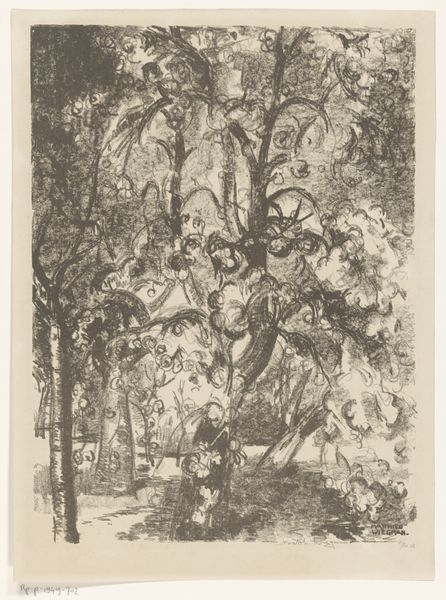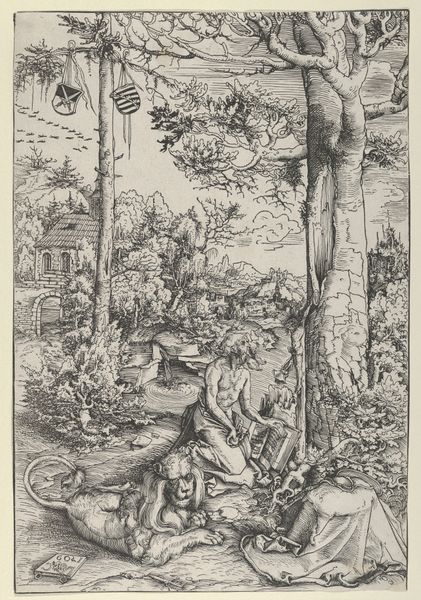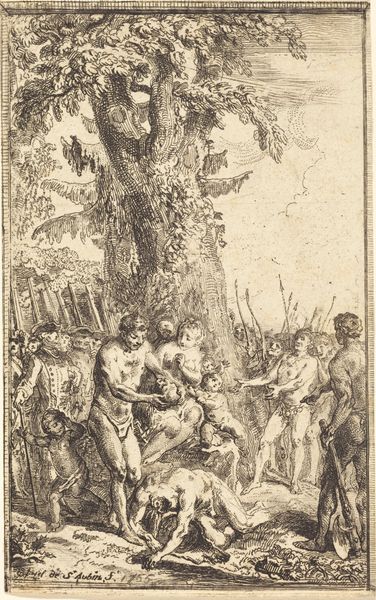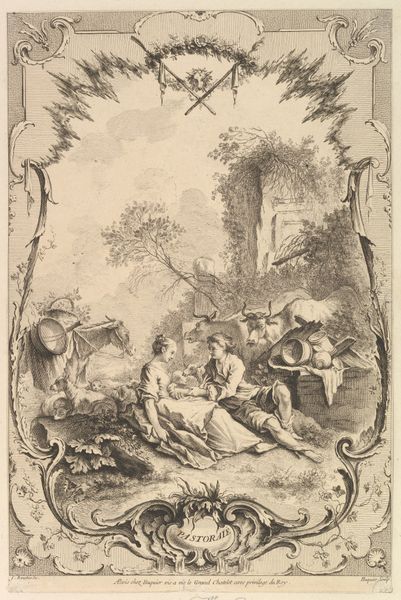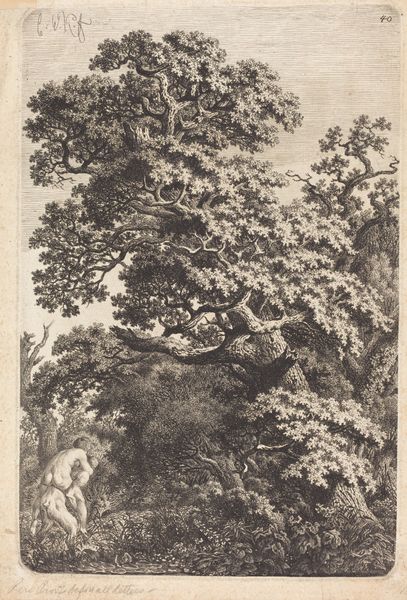
drawing, print, etching
#
drawing
#
baroque
# print
#
etching
#
figuration
#
history-painting
Copyright: Public Domain
Pietro Testa made this etching, "The Garden of Charity," in the 17th century. Etching is an indirect process. First, the artist covers a metal plate with a waxy, acid-resistant ground. Using a needle, they scratch away the ground to expose the metal. The plate is then submerged in acid, which bites into the exposed lines. The longer it sits, the deeper and darker the lines will be. The plate is then inked, and the surface wiped clean, leaving ink only in the etched lines. Finally, it’s pressed onto paper. The controlled precision of etching allowed Testa to create the incredible detail you see here. Think of the repetitive, skilled labor it took to create these marks, building up the image line by line. Though seemingly worlds apart, this is not so different from textile production or other forms of proto-industrial labor. The printmaking medium allowed Testa to circulate this image widely, making the virtue of charity accessible to all. That is the true point of the work: to consider the relationship between materials, making, and meaning.
Comments
No comments
Be the first to comment and join the conversation on the ultimate creative platform.
